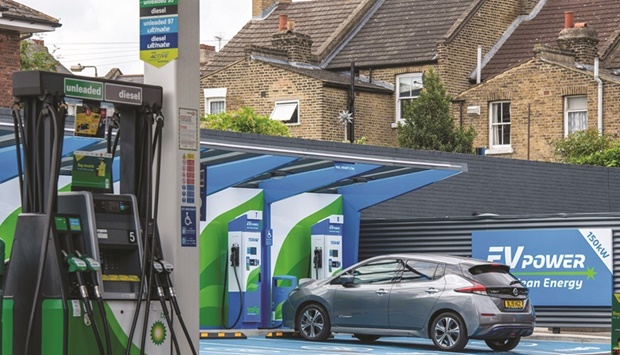More than $4.8bn has been pumped into the electric-vehicle charging industry this year — a combination of roll-out announcements, debt financing, investment and acquisitions. And this is just the deals that have disclosed financial figures.
Large corporates are competing for M&A targets with pure-play charging companies they may previously have acquired, and new competitors are cropping up. Infrastructure investment funds’ appetite is increasing, as they see EV charging as a maturing asset class.
Explosive growth is still required to go from single-digit billions of investment today to hundreds of billions worth of investment over the next two decades.
Some of the biggest roll-outs this year include a €1bn ($1bn) announcement by BP and Iberdrola for 11,000 fast chargers across Europe, and a $650mn investment across the US by Blackrock, Daimler Truck and NextEra Energy Resources.
Electrify America also got a $450mn injection from parent Volkswagen and Siemens for its US charging network.
French energy storage and EV charging provider NW Storm raised €300mn, fast-charging manufacturer Freewire raised $125mn, and charging operator EVCS raised $69mn. Major UK charging companies have also been on a spree, with Raw Charging and Gridserve raising £250mn ($301mn) and £200mn, and Instavolt securing £110mn of debt funding.
BloombergNEF estimates that over 73% of investment in the public chargers that were put in the ground globally in 2021 went to ultra-fast charging.
While the sub-sector continues to dominate investor funding this year, the whole EV charging supply chain is attracting investment.
Slow-charging operators, software platforms, installers, charging component manufacturers and wireless charging companies have all received investment. Financers and larger charging companies are sifting through the EV charging field to find the right pieces to fill their technological and regional gaps.
Large corporates including Siemens (Electrify America and WiTricity), Shell (Cable Energia and NWG Charging), ABB (InCharge Energy, Numocity, Chargedot) and Schneider Electric (EV Connect) are great examples. But smaller companies are also stepping up their M&A game.
Blink Charging acquired fellow US competitor SemaConnect for $200mn and the UK’s EB Charging for about $23.4mn. Wallbox announced two acquisitions last week: installer Coil and circuit-board manufacturer Ares Electronics.
New players continue to pop-up, driven by the fast growth and huge availability of government funds. Voltera is an example of a new company launched just this month with backing from EQT Infrastructure, a fund with €77bn under management.
BNEF expects cumulative investment in charging to exceed $360bn globally by 2030 and over $1tn by 2040 to meet the needs of the electric vehicle fleet. More than $1.4tn is needed in a net-zero scenario where the entire vehicle fleet would be on track to be electric by 2050.
Around 60% of this investment is expected to be used for putting DC fast chargers between 50 kilowatts and 1,000 kW in the ground.
To keep moving the needle on investor confidence and meet requirements over the coming decades, charging companies will have to show they can scale at pace profitably. The cost base for EV charging is still evolving and business models have yet to be proven.

A BP petrol station forecourt with fuel pumps and plug-in electric-vehicle charging points in London. More than $4.8bn has been pumped into the electric-vehicle charging industry this year u2014 a combination of roll-out announcements, debt financing, investment and acquisitions.
